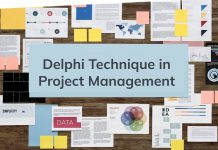
The process of collecting requirements identifies all the essential requirements, but one can’t assure that all the requirements are mentioned or included in the project. But, the defined scope process selects the final project requirements from the requirements documentation delivered during the collect requirements process. Hence, the project manager can develop a detailed description of the project and product which is called the project scope statement.
How to Define Scope of Project?
Define Scope is a process of developing a detailed description of the project and product. The key benefit of the defined scope process is that it describes the project’s boundaries by defining which of the requirements collected will be included in the project.
Define Scope of Project – Inputs
The following are included in the defined scope process as the inputs:
- Project Charter
- The Project Management Plan
- Project Documents
- Enterprise Environmental Factors
- Organizational Process Assets
1. Project Charter
The project charter is a document that provides the high-level project description and product characteristics. It also enlists all the project approval requirements. If a project charter is not being used to its fullest in any organization, then comparable information needs to be developed and used as a basis for the detailed project scope statement. In situations where the organizations do not produce a formal project charter for setting out common goals, rules and regulations they will usually perform an informal analysis to identify the content necessary for further scope planning.
2. The Project Management Plan
Both Project Management and scope management plans have the same characteristics but whereas the Project Management plan documents how the project scope will be defined, validated, and controlled.
3. Project Documents
Examples of project documents that can be listed as inputs for defining scope are as follows;
-
Assumption Log
The role of the assumption log is to identify the assumptions and constraints about the project, product, stakeholders, environment, and other factors that can influence the project and the product scope.
-
Requirements Documentation
The process of identifying the list of requirements that are to be incorporated into the project scope.
-
Risk Register
The risk register mainly contains response strategies that may affect the project scope by reducing the project and the product scope to avoid or mitigate a risk that is to occur in the project.
4. Enterprise Environmental Factors
The factors which can influence the Define Scope process include:
- Organization’s Culture
- Infrastructure
- Personnel Administration
- Marketplace Conditions
5. Organizational Process Assets
The factors that influence the Define Scope process include:
- Policies, procedures, and templates for a project scope statement
- Project files from previous projects
- Lessons learned from previous phases and projects
| Looking forward to enhancing your Project Management skills? Enroll in PMP Certified Online Training now, and take your career to new heights. |
Define Scope of Project – Tools and Techniques
The following are included in the tools and techniques for defining the scope of a project:
- Expert Judgement
- Data Analysis
- Decision Making
- Interpersonal & Team Skills
- Product Analysis
1. Expert Judgment
With regards to the technique of expert judgment, one has always to consult a group or an individual who has exceptional knowledge in dealing with similar projects.
2. Data Analysis
The best example of a data analysis technique that can be used in this process is alternatives analysis. This alternatives analysis helps in evaluating ways to meet the requirements and objectives that are identified in the project charter.
3. Decision Making
Multi-criteria decision analysis is the best example of this particular process. Under this technique, a decision matrix is used to provide a systematic analytical approach for establishing necessities like requirements, schedules, budget, and resources to clarify the project and product scope further.
4. Interpersonal and Team Skills
An example of interpersonal and team skills is the facilitation process. This process is mainly used in workshops and sessions happening with key stakeholders who are always high on expectations. The ultimate goal of this process is to reach a cross-functional and shared understanding of the project deliverables.
5. Product Analysis
Product analysis is used to define the products and services related to a particular project. The process includes asking questions about a product or service and generating answers to describe the use, characteristics, and other relevant aspects of what is going to be delivered.
The following are the examples related to the product analysis process:
- Product breakdown
- Requirements analysis
- Systems analysis
- Systems engineering
- Value analysis
- Value engineering
Define Scope of Project – Outputs
The following are included as the outputs of the defined scope process:
1. Project Scope Statement
A project scope statement is a detailed description of the project scope, which includes significant deliverables, assumptions, and constraints. It also documents the project scope and the product scope and describes the project’s deliverables and the work required to deliver them. Based on the level and degree of detail the project scope statement defines the work that will be performed, and the work that is minimized can help determine how well the Project Management team can control the overall project scope.
The important components of the project scope statement include:
-
Product Scope Description
A method used to elaborate on the characteristics of the product that are defined in the project charter and requirements documentation.
-
Acceptance Criteria
A set of conditions are required to be met before the final deliverables are accepted by the stakeholders.
-
Deliverable
Any unique and verifiable product that is required to be produced to complete a process, phase, or project.
-
Project Exclusion
A method to exclude the feasible products from the scope of the project to help the project manager to manage the stakeholder’s expectations.
Elements of the Project Charter and the Project Scope Statement
The following are the elements of the project charter and project scope statement respectively:
The Project Charter elements are as follows:
- Project Purpose, high-level requirements, overall project risk, etc.
- Measurable project objectives and related success criteria.
- High-level project description, boundaries, and key deliverables.
- Summary milestone schedule, pre-approved financial resources, key stakeholder list.
- Project approval requirements (i.e., what constitutes success, who decides the project is successful, who signs off on the project).
- Project exit criteria (i.e., what are the conditions to be met to close or cancel the project or phase)?
- Assigned project manager, responsibility, and authority level.
- Name and authority of the sponsor or another person authorizing the project charter.
The Project Scope Statement elements are as follows:
- Scope of the Project
- Deliverables defined for the project
- Acceptance Criteria
- Project Exclusions
Project Documents Updates
-
Assumption Log
The role of the assumption log at this stage is to update the log with additional assumptions or constraints which were identified during the project process.
-
Stakeholder Register
The documentation consists of all of the stakeholder requirements that are to be met and also registers the important deliverables that are in the pipeline of the project manager.
-
Requirements Documentation
A method that is used to record the requirements of a particular project. This documentation will keep all the deliverables that are met and the other deliverables that are to be accomplished by the project manager.
-
Requirements Traceability Matrix
A method that is used to compare the project’s scope, requirements, and deliverables are all the same when they are compared with the project’s baseline that was created during the Project Management plan.
The defined scope process takes the high-level product descriptions, assumptions, and constraints, which were documented in the developed project charter process during the initiating process group, and develops from them a more detailed description of the scope in the project scope statement. The project scope may not be entirely defined during the initial stage of determining the scope.
| Enroll in our PMP Boot Camp Online Training today, and develop a strong foundation in the principles of Project Management. |
Conclusion
Aspects like additional risks, assumptions, and constraints arise during the project execution, so the project scope may be revised or updated as necessary as part of the iterative process of developing the project scope. The defined scope process is a lengthy process that commences atop from the high-level requirements to detailed requirements of the stakeholders and is translated into significant deliverables. These major deliverables are set as the primary objectives for the Project Management team, and the team is asked to fulfill these requirements. So, Give yourself a chance to enhance your Project Management skills with PMP certification training, and excel in your career.
Know more about Project Management best practices through Invensis Learning’s Project Management certification training on PMP Online Training Courses, Best CAPM Online Course, Prince2 Certification Online, Project Management Fundamentals, etc.
















